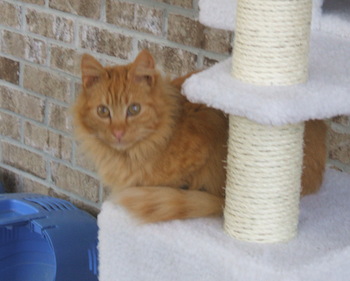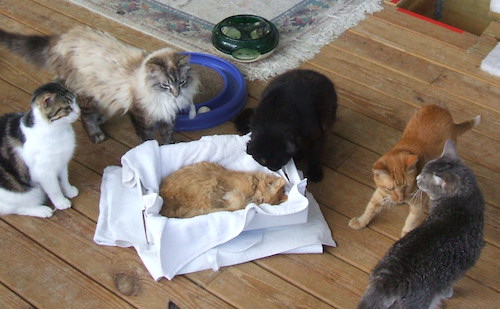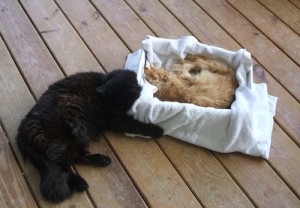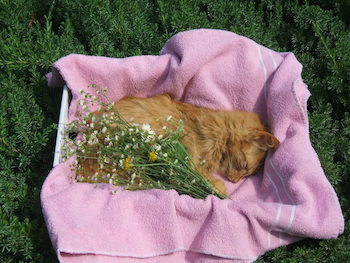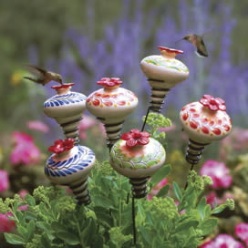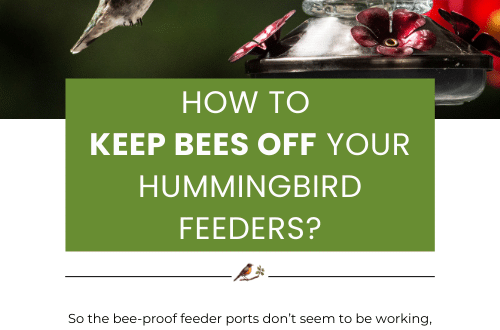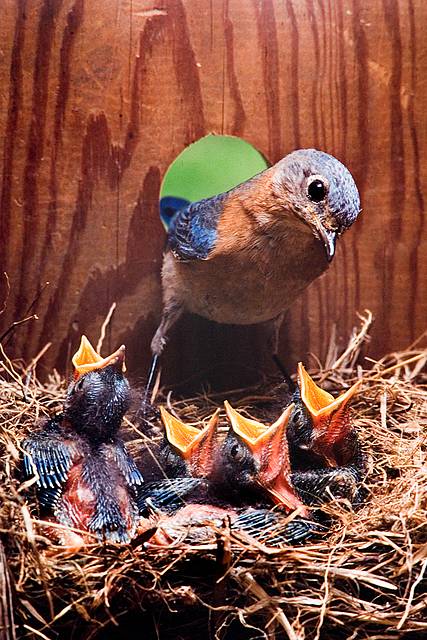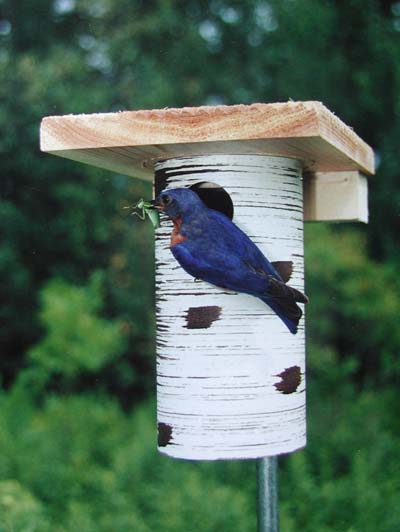-
Honoring Sammy with Tabby Cat Wood Birdhouses
My friend’s a pretty decent writer, some of the cat stories are quite touching… this is one of them. If you happen to be a cat person who’s crazy enough to have a few wood birdhouses that resemble your cats (us), or even one who’s remotely fond of your pets, then read on. And if you’ve ever wondered about an animals’ capacity for love or understanding – this will should also be of interest.
Dumb Animals
My animal rescue work has brought a number of new friends into my life. This story is about two of them: Sara and Michelle. Either of them will happily and readily tell you that each is the others very best friend. I don’t know much about their history — things like how they met and how long they’ve been friends. I do know they both have dedicated countless hours and immeasurable amounts of energy to making lives better for neglected and abused animals, and as far as I’m concerned, that’s one of their most important characteristics.
In the spring of 2012, Sara left Florida and moved out west. One of her last rescue efforts before leaving this part of the country (she continues her work on behalf of animals prior to moving was to place a leukemia positive cat with me. He’s a big, fluffy, all black guy that I named “Bartholomew,” (heavy on the “MEW,”) in hopes he’d be a mellow fellow. Turns out that I usually
call him “Bart,” as in Black Bart. He’s not a bad cat, just an independent guy who never has had much use for sitting in laps or having his head rubbed or human interaction of any sort.
In July of last year, Michelle and her daughter rescued a poor little waif of a kitten from animal control. As the Fates would have it, he tested positive for leukemia. At Sara’s urging, Michelle contacted me, and tiny orange Samson (Sammy) came to live at my house. If ever there was an irresistibly cute kitten on the face of the earth, Sammy was that cat. Everyone who met him fell instantly in love with him. I did my very best not to tumble head over heels for him because I know the usual outcome for kittens born with the leukemia virus, but I was powerless to resist his charms. Within two days of his arrival here, I was hopelessly hooked.
Sammy was clearly a cat that veterinarians label “at risk.” He was anemic, underweight (at his prime, he was less than six pounds), prone to respiratory infections, and generally frail. But what he lacked in physical stamina, he more than made up for in sweetness and personality. Truly as endearing an animal as has ever crossed my path.
Three weeks ago, Sammy took ill. He’d been sick other times and always managed to pull past it, but this illness was more serious. I took him to the vet in late May and over the next 20 days, we threw most of the pharmacy at him, but with no immune system thanks to the wretched leukemia virus, he couldn’t fight this foe.He and I were at the vet’s office when it opened this morning. In three weeks’ time, he’d lost nearly a quarter of his body weight. His chest cavity was filled with fluid leaving him on the verge of congestive heart failure, and the vet said his lungs sounded like crinkling cellophane, almost certainly pneumonia. The only compassionate choice was to kiss his head over and over and over for all the people who loved him and send him on his way.
I brought him home in his burial box and left his body on the deck with the group of cats he’d hung out with while he was my boy — including big black Bart. From the first picture, you can see that several of his pals spent a minute or two paying their respects. One by one, most of them went on their way, but Bart lingered. And lingered. Bart and Sammy hadn’t been particularly good buddies. They didn’t fight, but likewise, they didn’t snooze together or engage in a close friendship. It struck me as odd that Bart needed all this time to say goodbye to Sammy.
Look at this picture. Bart is hugging Sammy’s burial box — not unlike what I’ve seen humans do if they’ve lost a particularly beloved family member or friend. When I went to pick up Sammy’s box, Bart literally clung to the towel that was draped over it, begging me to let him have a little more time with Sammy. I remarked out loud to Bart that I didn’t understand why he was so upset by Sammy’s death since they hadn’t been that close in life.
As I put the box back down, Bart fixed a gaze on me that ate right to my soul. Anyone who’s spent much time around animals knows the look I’m referring to. It’s the one that roughly translated means, “I know you’re merely a human being and therefore have limited cranial capacity, but try really hard to think about this situation.” Pause, pause. “Think about how it is that Sammy and I came to be your fur kids.”
Picture the light bulb blinking on over my head…. Okay. Got it.
Bart wasn’t just saying goodbye to Sammy for himself. He was Sara’s emissary, bearing her spirit all the way from Colorado to be here to lend comfort and support to Michelle and her daughter’s spirits for the loss of precious Sammy. Bart knew the importance of drawing the circle of love very tightly around Sammy’s earthly remains so that all the people who had played a part in saving his life (albeit for much too short a time by our human measure) could take sustenance from each other and find the strength to move past this sorrow.
Oh, the lessons these dumb animals impart. Dumb animals, indeed. If anyone ever makes a comment about unthinking, unfeeling animals, maybe you’ll tell them about how Bart & Sara and Sammy & Michelle came together for one essential group hug at precisely the right, crucial moment.
Sammy’s physical body is gone, but his beautiful soul and boundless wisdom will live on in my heart. Celebrate his life.
-
Pollinate the Garden with Hummingbird Feeders
Hey, it’s National Pollinator Week!
One of those little things often taken for granted, pollinators play a huge role in the environment and our food sources. Albert Einstein said “if the bees go, we go four years later”. This is a scary thought, as bumble bees are now being considered one of the “at-risk” pollinators of today.
Hummingbirds are pollinators, and extremely beneficial in the garden. Sadly, more and more folks are saying they’re seeing less of the tiny sprites this year. The long harsh winter may have had an adverse affect on their migration, as there were no food sources upon arrival in the gulf states. Nothing was blooming yet from where they could draw nectar.
Photo by Cathy Keller Some other surprising pollinators include: hover flies, bats, native bees, moths, and certain beetles and wasps. Laying off the pesticides helps these species thrive, as well as using native plants in the landscape. Butterflies are also major pollinators, but unfortunately are also on the “at-risk” list. Over-ripe fruit is attractive to them, and also draws fruit flies which they’ll consume. Place a chunk of melon, orange, apple or strawberry on a plate in the garden for the flying gems.
Entice beneficial pollinators to your garden by keeping hummingbird feeders fresh! Sugar ferments and spoils after just a few days in the heat. Hummingbirds won’t touch it and may not even bother to check the feeder again. And ants, just one ant in the nectar ruins the whole batch! Use an ant moat to protect nectar from these pesky critters. A dab of petroleum jelly around the top of the hanger will also thwart ants, but tends to melt after a few days of extreme heat.
The solution should be changed every 2-3 days in hot weather. Consider making your own nectar so feeding the sprites isn’t as costly. Simply plain table sugar and water… no red dye needed! Nothing else should ever be added to the solution. One cup of sugar to four cups of water, the ratio is 1:4 sugar to water. Quick, easy and economical, store unused nectar in the fridge for up to two weeks.
Plant annuals and perennials that bloom throughout the season. Tube-shaped flowers are nectar producers, as well as native vines and salvia. Using these and other native plants in the garden provides a natural and steady food source for pollinators.
Leave some bugs. A great source of protein, hummingbirds and butterflies go after tiny insects (gnats, fruit flies and others) as a large part of their diet. With the spring nesting season and lots of babies out there now, insects are an important food source. If you’re using pesticides in the yard, stop! They’re no good for anyone 🙁
Fresh water is integral to all friendly fliers. If you’re lucky enough to have a pond, creek, or stream on your property, chances are great pollinators will visit. If not, consider adding a a shallow bath. A birdbath needn’t be fancy… just shallow and fresh. The maximum depth is just 2-3 inches, even a plastic plant saucer works well. If stagnant water is of concern, consider one of many bird bath accessories to keep the water moving. Water wigglers, bath drippers, solar fountains or leaf misters are just a few options that keep water fresher for longer periods, and prevent mosquitoes from laying eggs. Hummingbirds, butterflies and songbirds are attracted to these fun additions, and will stick around to use them daily.
So there you have it… celebrate National Pollinator Week by enticing these friendly fliers to your place!
-
Happy Father’s Day from Inside the Blue Bird Houses!
Many males in the winged world also labor in raising their families, so today we salute all of the hard working dads who help raise their kids!
A typical view inside blue bird houses, dad keeps a watchful eye on nestlings, while taking turns with mom bringing food to the babies.
The digs: A male bird’s skill at nest building is a sign of his suitability as a mate; he invests huge effort in the task. Males will build multiple nests to attract females, they’ll continue to build new nests until a female is happy with the construction and chooses one.
The food: Many male birds help raise their families, bringing food home to the babies. Sometimes they even have to incubate the eggs alone or take turns with the female. Male bald eagles, for example, take turns sitting on the eggs as well as bring food home to the young.
Protection: In species where both parents care for the young, the male often gathers food while the female spends more time brooding, keeping the baby birds warm, sheltered and safe from predators.
– Western Bluebirds usually breed in monogamous pairs. By the end of breeding season, most daughters disperse; most sons and the occasional daughter remain with their family for winter. In spring, the yearlings go off and nest on their own, but sometimes one or more sons stay to help their parents. Sometimes a bluebird with his own mate will help at his parents’ nest, while also feeding his own young next door. Source citation: The Cornell Lab of Ornithology
Happy Father’s Day to All~We salute your dedication to family!

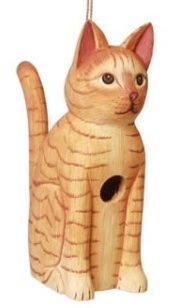
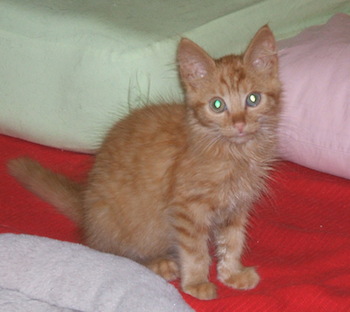 call him “Bart,” as in Black Bart. He’s not a bad cat, just an independent guy who never has had much use for sitting in laps or having his head rubbed or human interaction of any sort.
call him “Bart,” as in Black Bart. He’s not a bad cat, just an independent guy who never has had much use for sitting in laps or having his head rubbed or human interaction of any sort.